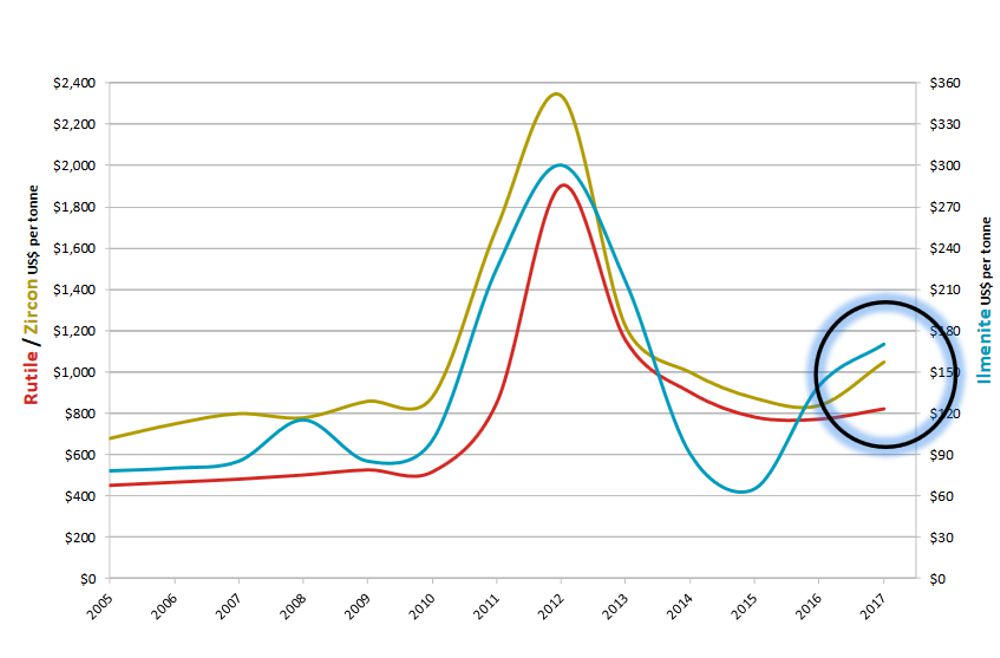The Valuable Minerals in Heavy Mineral Sands – Zircon & Monazite
Zircon
Zircon (zirconium silicate – ZrSiO4) almost always has Zr replaced by rare earth elements. Hafnium is most common, often present in significant quantities, up to 5%. Uranium, thorium and yttrium also occur in the zircon lattice.
When uranium and thorium are included in the lattice at the time of crystallization, they immediately start to decay. The ratio of parent to daughter products can be used to date the zircon. The oldest dated zircon crystal is 4.4 billion years old, from Jack Hills in Western Australia.
A brief word about zircon related names:
Zircon is a naturally occurring zirconium silicate
Zirconium is a silvery metal, number 40 in the periodic table
Zirconia is zirconium oxide, ZrO2. In its natural form it is known as baddeleyite.
Cubic Zirconia is a synthetic gemstone that mimics diamond.
In 2016 world production of zircon was 1.46Mt, with Australia, South Africa and China being the largest producers. According to the United States Geological Survey, world reserves are 75Mt.
Zircon, zirconia and zirconium have a wide range of uses. The main use of zircon is ceramic tiles and glazes. Because it is stable at high temperatures it is also used as a refractory in foundries. Zirconia is made by heating zircon. It is primarily used in ceramics and provides superior strength, hardness and wear resistance. A recent use is in knife and scissor blades. The blades are very sharp, extremely hard and long lasting.
Zirconium is transparent to electrons and is used in nuclear power plants where neutron must be able to move freely, such as the cladding of fuel rods. It also alloys readily with magnesium, which produces lighter, stronger alloys.
The price of zircon, like those of ilmenite and rutile, has been highly variable over the past decade, as can be seen in the chart below.
 Chart Courtesy Base Resources Limited
Chart Courtesy Base Resources Limited
Monazite
Monazite often occurs in heavy mineral sand deposits, but generally at low levels. It is an important source of rare earths; however, the largest source is from bastnaesite (a fluorocarbonate) deposits in China. There are several different monazites, depending upon which rare earths make up the mineral. The most common is cerium monazite – (Ce, La, Nd, Th)PO4.
Monazite is an important ore for thorium (Th), lanthanum (La) and cerium (Ce). It often includes minor amounts of uranium which, along with thorium, make the monazite radioactive. This can be an environmental concern in some cases, to the extent it is not allowed to be mined.
The largest producers are Australia, India and Brazil. The price is highly variable, depending upon which rare earths are present, and their grade. Further, the price varies with variation in the price of the relevant rare earth. As a guide, in 2016 both cerium oxide and lanthanum oxide were worth USD2/Kg imported into the US, down from USD11/Kg and USD10/Kg in 2012.
